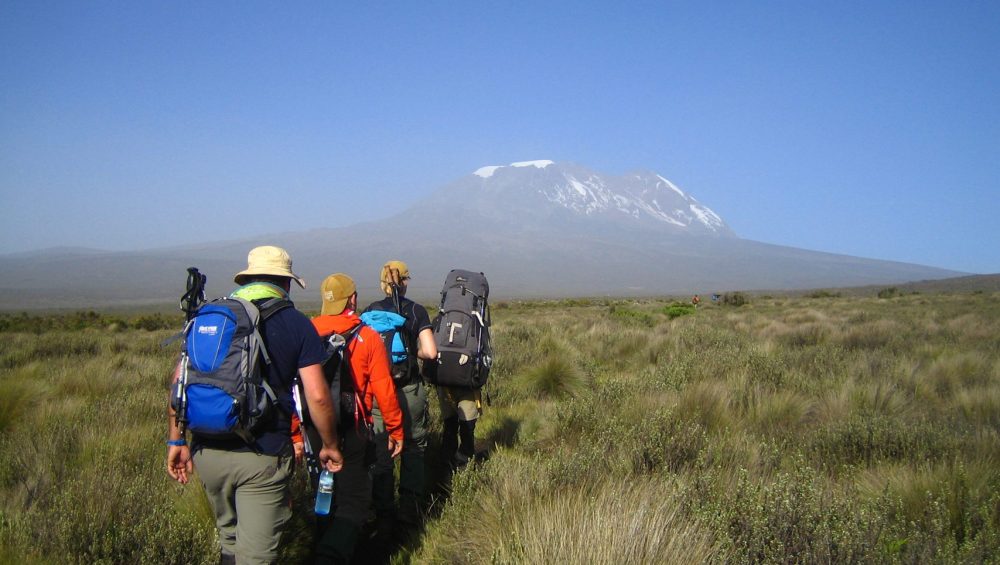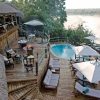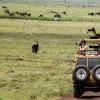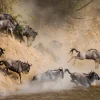Of the many routes that lead to the summit of Africa’s highest peak, the Lemosho Route has earned a reputation as being the most beautiful and one of the most successful. Winding through some of the most stunning and remote landscapes on Mount Kilimanjaro, this path offers a truly unique and memorable trekking experience.
While some routes are known for their challenge and others for their speed, the Lemosho Route on Kilimanjaro is celebrated for its perfect balance of breathtaking scenery, gradual acclimatization, and high success rates. Whether you are a seasoned trekker or a first-timer seeking the ultimate adventure, this comprehensive guide will walk you through everything you need to know about this extraordinary journey.
Why Choose the Lemosho Route?
The Lemosho Route is a relatively new path, which has allowed it to maintain a sense of exclusivity and wildness. Its western start offers a quieter, less-traveled beginning, immersing you in pristine wilderness from the very first step. The route then joins the more popular Machame Route, but not before providing days of unique vistas.
Many veteran trekkers and tour operators consider this to be the best route Kilimanjaro has to offer for several key reasons:
- Stunning Scenery: The Lemosho Route traverses a variety of landscapes, from lush, thick rainforests and high-altitude deserts to the awe-inspiring Shira Plateau, one of the highest plateaus in the world. The panoramic views of the Great Rift Valley and the Kibo massif are simply unparalleled.
- Excellent Acclimatization: The longer duration of the Lemosho Route (typically 7 or 8 days) is a major advantage. The trek follows a “climb high, sleep low” profile, a proven strategy for acclimatizing to the altitude. This gradual ascent significantly reduces the risk of altitude sickness and increases your chances of reaching the summit.
- High Success Rate: Due to the better acclimatization profile, trekkers on the Lemosho Route generally have a higher success rate compared to shorter, steeper routes. This makes it an ideal choice for those who want to give themselves the best possible shot at standing on Uhuru Peak.
- Lower Crowds: The initial days of the trek are less crowded than on other popular routes, providing a more intimate and peaceful experience with nature. You get to enjoy the quiet solitude of the mountain before joining a more populated trail.
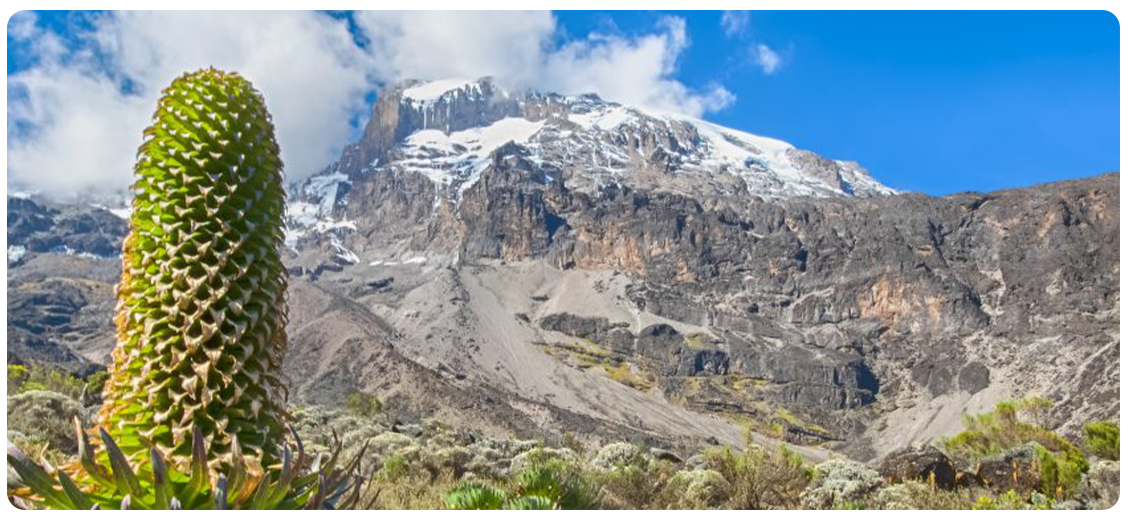
A Day-by-Day Itinerary: What to Expect on a Lemosho Trek
A standard Kilimanjaro Lemosho route can be done in either 7 or 8 days. The longer version is highly recommended for better acclimatization. Here is a typical 8-day itinerary:
Day 1: Lemosho Gate to Mti Mkubwa Camp (2,780m / 9,120 ft) The journey begins with a drive to Lemosho Gate. From there, you’ll embark on a beautiful walk through the forest, a perfect introduction to the mountain’s rich biodiversity. The trail is gentle and peaceful, leading you to your first campsite, Mti Mkubwa (meaning “Big Tree”).
Day 2: Mti Mkubwa Camp to Shira 2 Camp (3,840m / 12,600 ft). Today’s trek takes you out of the rainforest and onto the Shira Plateau. This is a dramatic change in scenery as you ascend to the Shira caldera, a World Heritage Site. You’ll pass through moorland and enjoy spectacular views of Kibo, the summit of Kilimanjaro. You will camp on the expansive Shira Plateau.
Day 3: Shira 2 Camp to Barranco Camp (3,950m / 12,960 ft). This is a critical acclimatization day. You’ll hike high to Lava Tower (4,630m / 15,190 ft) for lunch, an impressive volcanic plug that juts out from the landscape. This part of the day follows the “climb high, sleep low” principle. Afterward, you’ll descend to the stunning Barranco Camp, nestled in a sheltered valley below the towering Barranco Wall.
Day 4: Barranco Camp to Karanga Camp (4,035m / 13,240 ft) Today begins with the famous “Barranco Wall” climb. This is a thrilling, non-technical scramble that requires some careful hand-and-foot coordination. Your guides will be there to help you every step of the way. Reaching the top of the wall offers fantastic views before a short trek to Karanga Camp.
Day 5: Karanga Camp to Barafu Camp (4,640m / 15,220 ft) A relatively short but demanding day as you make your final push to the last campsite before the summit attempt. The landscape becomes more desolate and rocky. You will arrive at Barafu Camp in the early afternoon, allowing you plenty of time to rest and prepare your gear for the night’s summit bid.
Day 6: SUMMIT DAY! Barafu Camp to Uhuru Peak (5,895m) to Mweka Camp (3,100m). You’ll wake up around midnight to begin the long, slow, and cold ascent to the summit. The trail is steep and covered in scree, but the goal of reaching Uhuru Peak is a powerful motivator. After a magical sunrise, you’ll begin the long descent to Mweka Camp, a tiring but rewarding journey.
Day 7: Mweka Camp to Mweka Gate (1,640m) The final day is a gentle descent through the rainforest. You’ll pass through beautiful, thick forest before reaching Mweka Gate, where you will be presented with your climbing certificates.

Key Considerations for a Lemosho Trek
- Duration: While a 7-day Lemosho is possible, the 8-day version is highly recommended for better acclimatization and a more relaxed pace.
- Cost: Due to the longer duration and remote start, the Lemosho Route is generally one of the more expensive routes. However, the higher success rate and superior experience make it a worthwhile investment.
- Physical Demands: While not a technical climb, the Lemosho Route still requires a good level of fitness and stamina. You should prepare with regular hiking, cardio, and strength training.
- Booking: Given the popularity of the Kilimanjaro Lemosho route, it is crucial to book with a reputable tour operator well in advance. They will ensure you have the best guides, equipment, and support crew for a safe and successful climb.
In conclusion, for those seeking the ultimate Kilimanjaro experience, the Lemosho Route is an exceptional choice. Its combination of stunning scenery, effective acclimatization, and high summit success rates makes it an adventure that is both challenging and incredibly rewarding.
